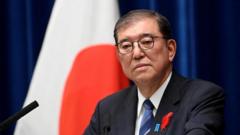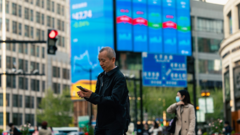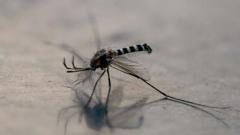The World Health Organization has reached a significant milestone with a pandemic treaty designed to streamline international cooperation in managing future health emergencies.
WHO Unveils Historic Legally Binding Treaty to Combat Future Pandemics

WHO Unveils Historic Legally Binding Treaty to Combat Future Pandemics
New agreement aims to improve global response and resource sharing during health crises.
The World Health Organization (WHO) has successfully finalized the text of a groundbreaking legally binding treaty aimed at enhancing the global response to future pandemics. This unprecedented agreement seeks to rectify the chaotic resource competition witnessed during the COVID-19 pandemic by promoting coordinated efforts among nations.
Key features of the pact include the expedited sharing of critical data concerning emerging pathogens, facilitating swift collaboration between scientists and pharmaceutical companies for the development of effective treatments and vaccines. Notably, the convention empowers the WHO to oversee global supply chains for essential healthcare supplies such as masks and personal protective equipment (PPE), a measure that aims to avert shortages during health crises.
Director-General Dr. Tedros Adhanom Ghebreyesus hailed the treaty as "a significant milestone in our shared journey towards a safer world." He emphasized the importance of multilateralism in addressing global threats, stating that "nations can still work together to find common ground."
The historic agreement, reached after three years of deliberation, marks only the second instance in the WHO's 75-year existence where such an international commitment has been established—the first being the tobacco control treaty in 2003. The treaty remains subject to formal adoption at the upcoming World Health Assembly, scheduled for next month.
It is worth noting that U.S. negotiators were absent from the final stages of the discussions due to the country’s impending withdrawal from the WHO in 2026, an action taken during President Donald Trump's administration. The treaty stipulates that participating countries must guarantee the availability of pandemic-related medications during future outbreaks. Additionally, manufacturers are obligated to allocate a minimum of 10% of their vaccine, therapeutic, and diagnostic production to the WHO, with another 10% being supplied at "affordable prices."
Countries also endorsed the transfer of healthcare technologies to lower-income nations, a politically sensitive clause following the perceived inequities in vaccine distribution during the pandemic. The agreement aims to empower local vaccine and medicine production in underserved regions, addressing grievances from developing countries who felt sidelined in the prior pandemic response. This clause raised concerns among wealthier nations, particularly those with robust pharmaceutical sectors, about potential impacts on ongoing research and development efforts.
Central to the negotiations was the establishment of a Pathogen Access and Benefit-Sharing System (PABS), which will enable the rapid exchange of vital data between pharmaceutical companies, thereby accelerating the development of effective drugs in response to future outbreaks.
Key features of the pact include the expedited sharing of critical data concerning emerging pathogens, facilitating swift collaboration between scientists and pharmaceutical companies for the development of effective treatments and vaccines. Notably, the convention empowers the WHO to oversee global supply chains for essential healthcare supplies such as masks and personal protective equipment (PPE), a measure that aims to avert shortages during health crises.
Director-General Dr. Tedros Adhanom Ghebreyesus hailed the treaty as "a significant milestone in our shared journey towards a safer world." He emphasized the importance of multilateralism in addressing global threats, stating that "nations can still work together to find common ground."
The historic agreement, reached after three years of deliberation, marks only the second instance in the WHO's 75-year existence where such an international commitment has been established—the first being the tobacco control treaty in 2003. The treaty remains subject to formal adoption at the upcoming World Health Assembly, scheduled for next month.
It is worth noting that U.S. negotiators were absent from the final stages of the discussions due to the country’s impending withdrawal from the WHO in 2026, an action taken during President Donald Trump's administration. The treaty stipulates that participating countries must guarantee the availability of pandemic-related medications during future outbreaks. Additionally, manufacturers are obligated to allocate a minimum of 10% of their vaccine, therapeutic, and diagnostic production to the WHO, with another 10% being supplied at "affordable prices."
Countries also endorsed the transfer of healthcare technologies to lower-income nations, a politically sensitive clause following the perceived inequities in vaccine distribution during the pandemic. The agreement aims to empower local vaccine and medicine production in underserved regions, addressing grievances from developing countries who felt sidelined in the prior pandemic response. This clause raised concerns among wealthier nations, particularly those with robust pharmaceutical sectors, about potential impacts on ongoing research and development efforts.
Central to the negotiations was the establishment of a Pathogen Access and Benefit-Sharing System (PABS), which will enable the rapid exchange of vital data between pharmaceutical companies, thereby accelerating the development of effective drugs in response to future outbreaks.






















